Does 'pay by app' mean an end to shopping queues?
- Published

Contactless payments may be all the rage these days, but you still have tap your smartphone, smartwatch or card on a terminal of some kind.
And at busy times, this can mean standing in queues or hanging around for ages waiting for the restaurant bill to arrive.
All that could be about to change.
"Payments are vanishing inside apps," explains Dave Birch, a payments expert at Consult Hyperion. "That's where all the interesting stuff is going on."
Take the Starbucks, external or Hailo, external apps for example. They let customers pay for products and services via apps linked to bank services - there's no need for physical interaction with a terminal at all. And at Starbucks, that means you don't have to join a queue for the till before you get your coffee.
Apple, Google and Samsung have all anticipated the significance of this and offer in-app payments via their own apps.
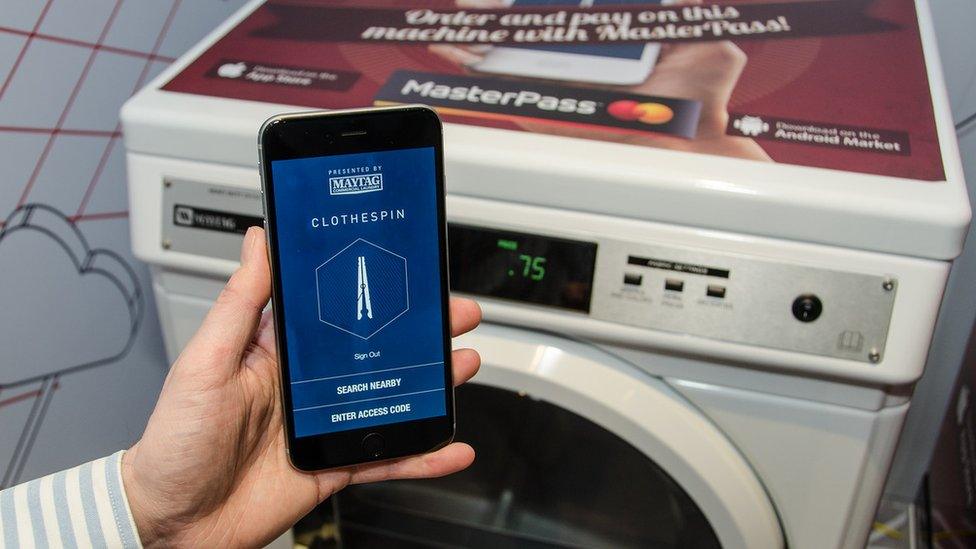
Maytag and MasterCard are rolling out mobile phone payment at launderettes in the US
And MasterCard's Qkr! app, external, available for both Android and iOS phones - and most types of payment card - enables customers to settle the food and drinks bill without the need to bother staff, saving time and hassle.
So far only Wagamama, ASK Italian and Zizzi restaurants have integrated their systems with the Qkr! app, but MasterCard says the Carluccio's chain and Young's brewery pubs will be "coming soon".
Digital wallets
The idea that our phones - indispensable, of course - could take on the functionality of our wallets has long been the dream of smartphone makers.
And tap-to-pay functionality has certainly been gathering momentum from a slow start. In the UK, contactless payments topped the one billion mark in 2015, according to the UK Card Association, external.
Market research outfit TrendForce is forecasting steady growth, external in the mobile payments market over the next four years.
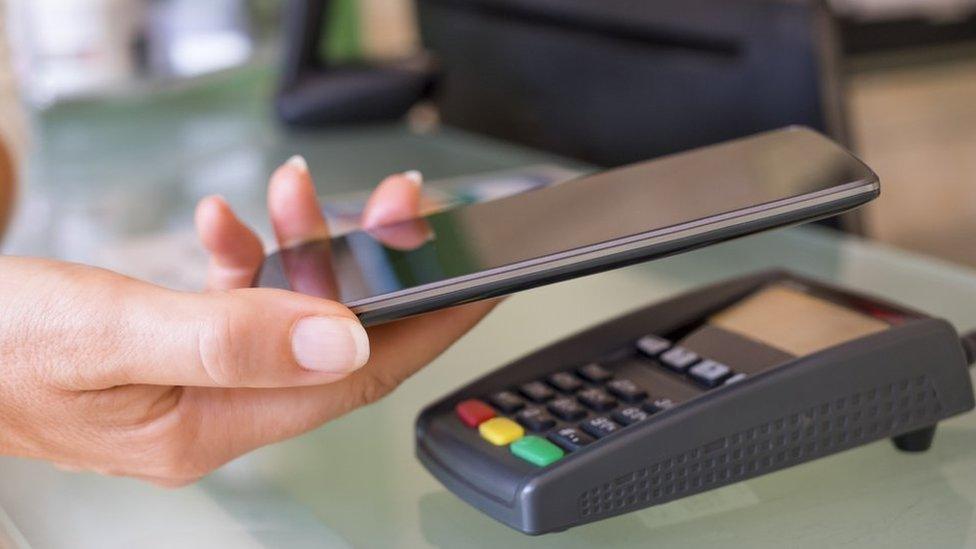
Contactless payment via smartphone...
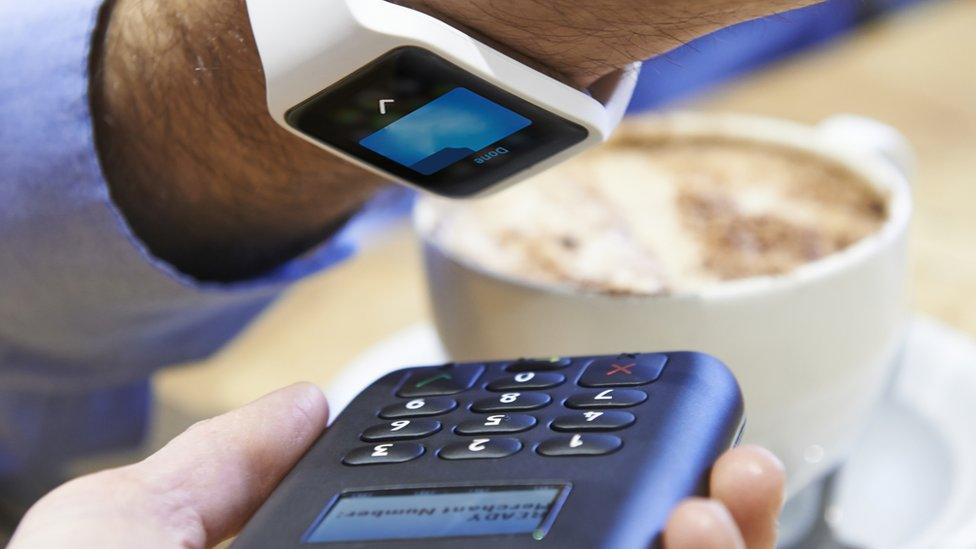
...or smartwatch still requires a machine reader, whereas in-app payments don't
In the US, big firms like retailer Wal-Mart and bank JPMorgan Chase & Co. are launching, external mobile payment apps this year.
And Android Pay, which allows owners of Android smartphones to tokenise their credit or debit cards and pay with their phones at contactless terminals, will launch in the UK "in the next few months", promises Google, external.
But services like Android Pay, Apple Pay and Samsung Pay all rely on the contactless payment infrastructure - embedded near-field communication (NFC) chips communicating transaction data with a payment terminal.
Yet NFC isn't exactly new technology, and adoption rates for some of these services have not been stellar so far, external. Plus, US contactless infrastructure lags behind that of Europe.
Which is why alternative approaches - such as in-app payments - that do away with the need for point-of-sale hardware completely are causing such excitement.
Cash direct
This approach is also being adopted for easy person-to-person payments.
For example, Paykey, external provides a keyboard update for iOS and Android that enables users to send payments to one another while chatting via apps such as Facebook, Twitter, WhatsApp and Instagram.
Paykey hasn't launched yet, but founder Daniel Peled explains that the transaction doesn't happen via the messenger app at all - but rather by using the smartphone's onscreen keyboard to direct functions which actually occur within the user's banking app.
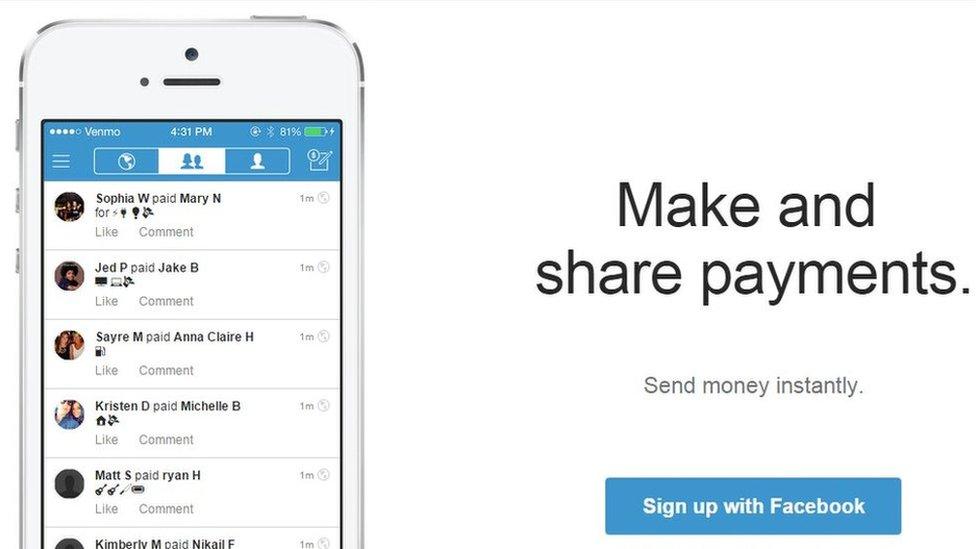
Person-to-person payment apps like Venmo are bringing banking into the mobile age
"Everything [the user] can do within the banking app, he can do within the keyboard, our keyboard," he says.
The payee doesn't need to have Paykey installed to receive the money - but he or she would need to be a member of the Paym database, which links UK bank accounts to mobile phone numbers. The Paym service currently has 3.2m users.
Other person-to-person apps, like Venmo, external, are also hoping to corner the market for such transactions.
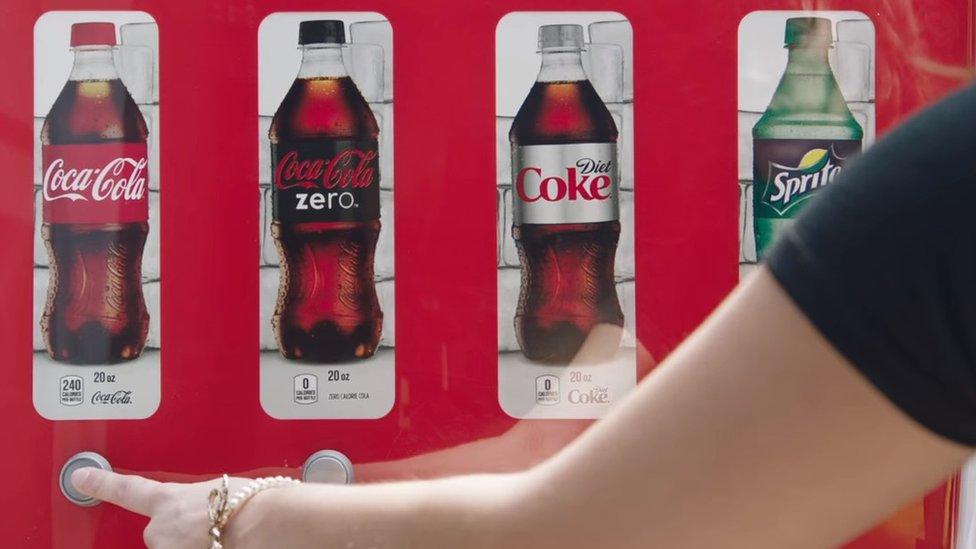
Vending machines, parking meters, and laundrettes could all go cashless ...eventually
And when EU regulation comes into force in 2018 requiring banks to provide access to data for third party app developers, companies like Facebook or Twitter may well start incorporating payment functionality within their own apps.
"Once you can connect Facebook directly to your bank account, why would you go to your bank app?" asks Mr Birch.
What price convenience?
But there's another issue at stake with mobile payment apps, besides convenience and functionality: security.
"Mobile apps are miniature web apps, so there are many vulnerabilities associated with those," says Tom Kellermann, chief executive of security investment fund Strategic Cyber Ventures.
Around half of mobile payment apps have not had their code effectively audited for security flaws prior to release, he believes.
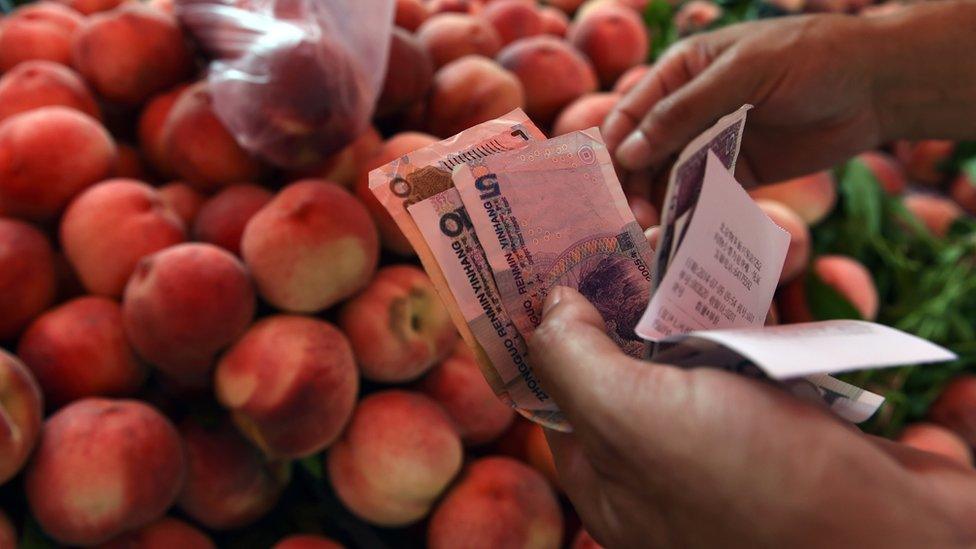
Despite the rise of smartphones, about 85% of global transactions are still cash-based
Users are also at risk of having banking credentials stolen after downloading malicious payment apps masquerading as official ones, he warns.
Mr Kellermann says his advice to users would include:
avoid using public wi-fi wherever possible
install security software on your smartphone
use strong passphrases on banking apps
avoid leaving Bluetooth on when you're not using it.
Security issues aside, there can be no doubt that the smartphone is transforming the way we pay for things and send money to each other.
But don't write off cash and cards just yet, says Ann Cairns, president of international markets at MasterCard. She points out that around 85% of the world's transactions are still in cash.
"And that figure isn't going down," she says.
There is also a great deal of costly infrastructure in place to handle card payments, so retailers will be reluctant to jettison all that immediately.
But as ever cheaper smartphones come onto the market, mobile payments are only set to grow.

Follow Technology of Business editor @matthew_wall on Twitter, external.
